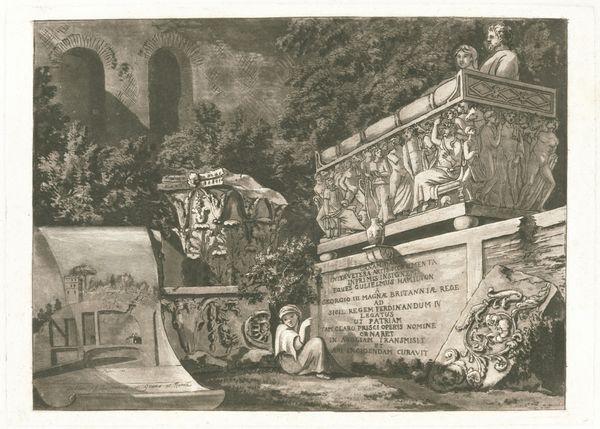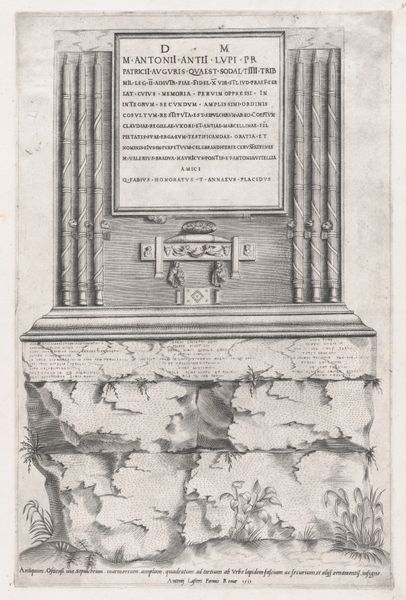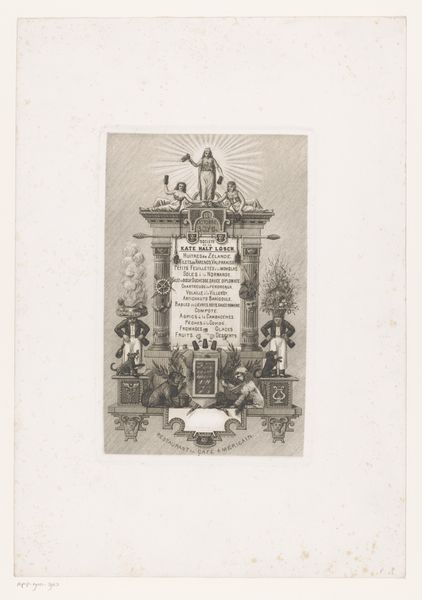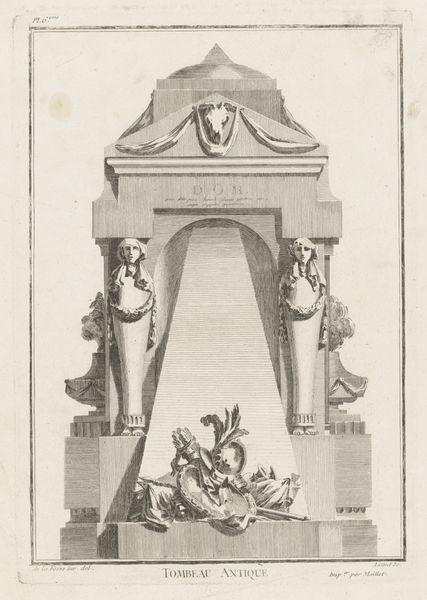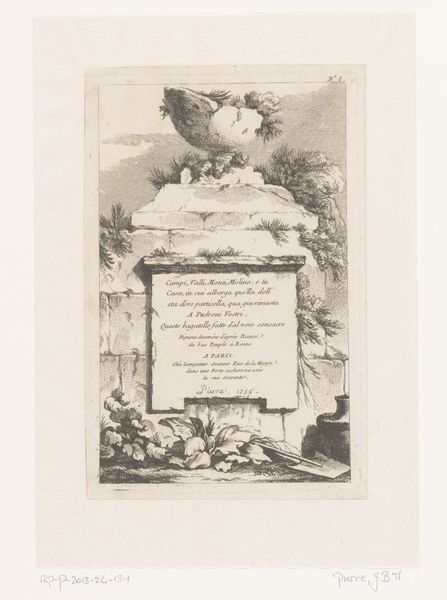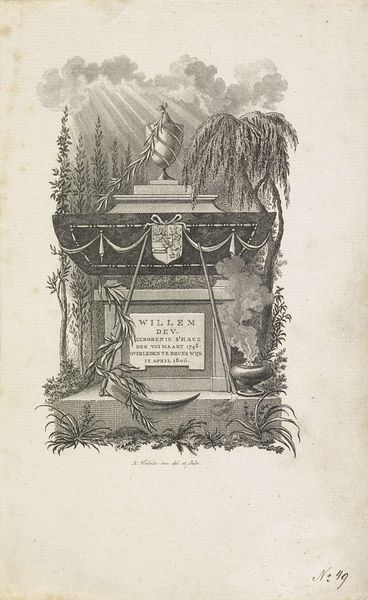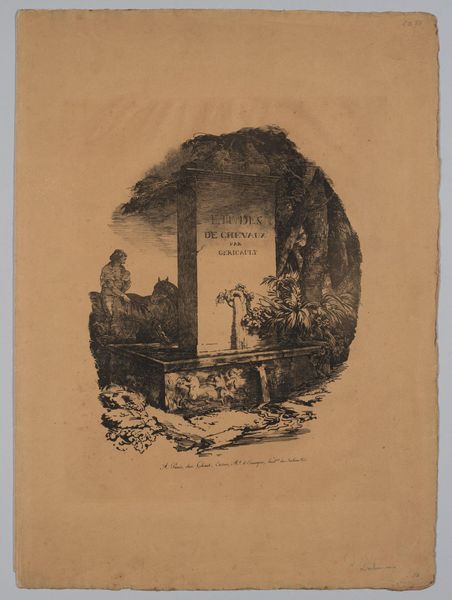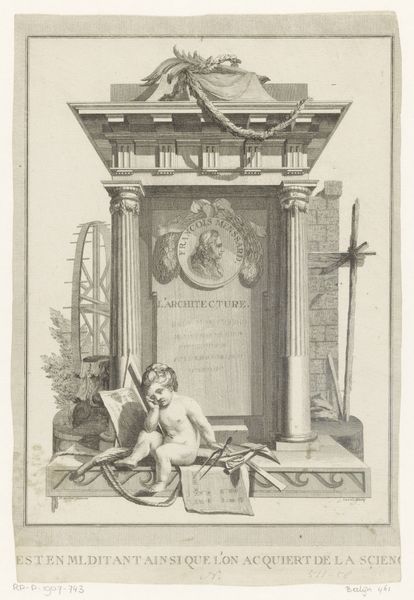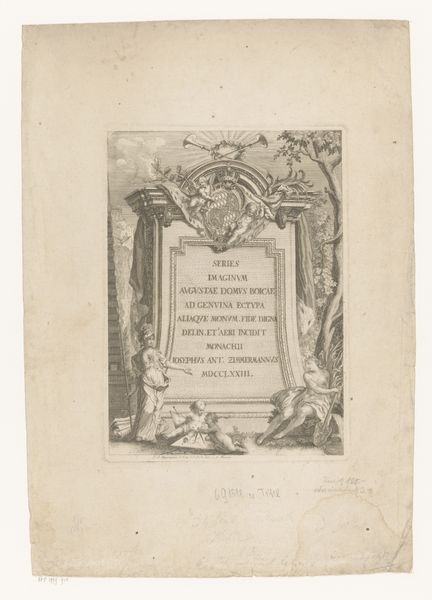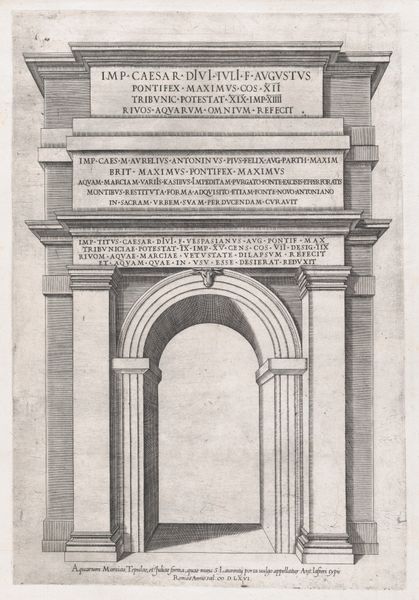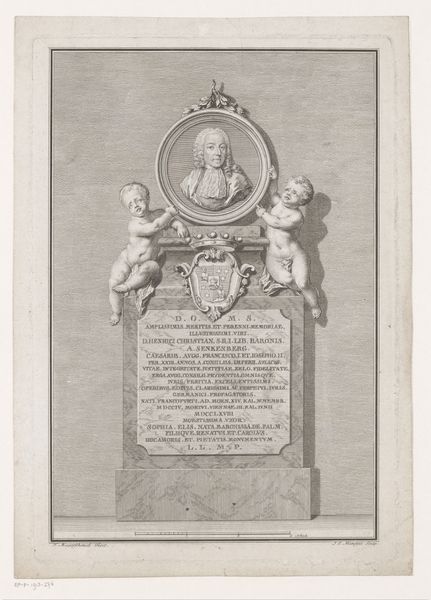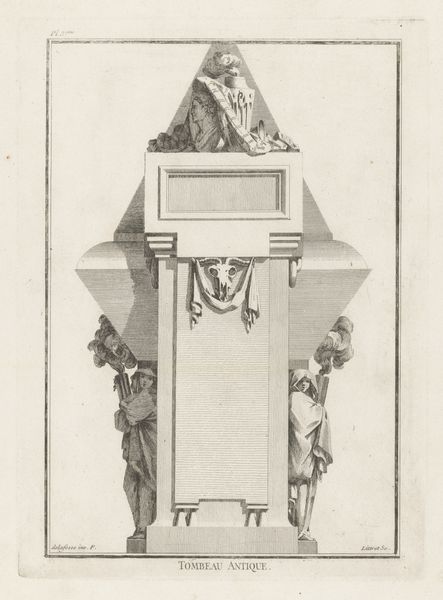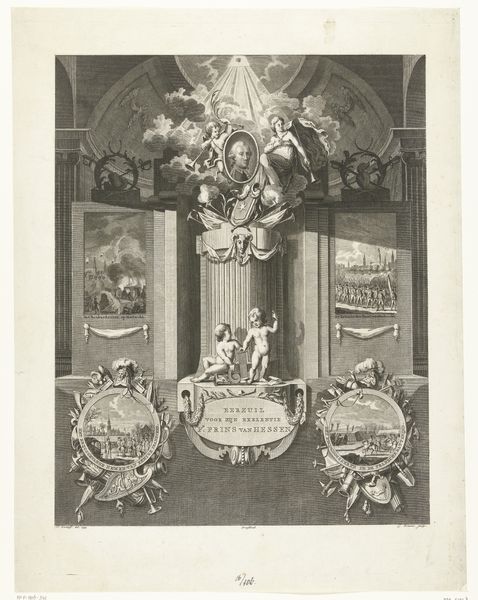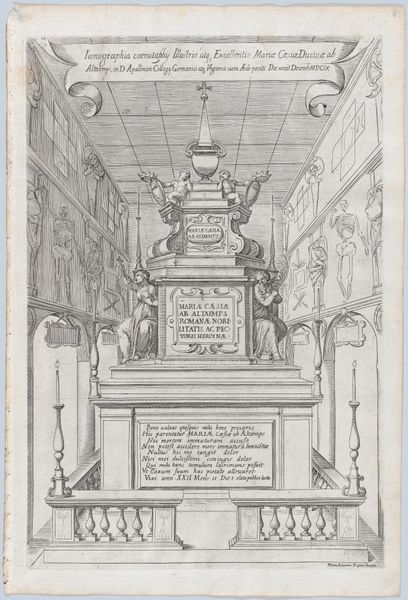
Speculum Romanae Magnificentiae: Sepulchre of Vibius 1551
0:00
0:00
drawing, print, engraving
#
portrait
#
drawing
# print
#
figuration
#
11_renaissance
#
history-painting
#
italian-renaissance
#
engraving
Dimensions: sheet: 19 5/16 x 13 9/16 in. (49 x 34.5 cm) plate: 17 5/8 x 12 1/16 in. (44.8 x 30.7 cm)
Copyright: Public Domain
Curator: This engraving from 1551, titled "Speculum Romanae Magnificentiae: Sepulchre of Vibius," offers a glimpse into the Italian Renaissance obsession with Roman antiquity. It’s currently held at the Metropolitan Museum of Art. Editor: It strikes me as quite severe at first glance. The lines are so precise, almost architectural in their rigidity. And the tomb sits heavily on that rough-hewn stone base; it gives a strange feeling of weight and permanence. Curator: Precisely! The image is part of a larger series intended to document and disseminate Roman monuments. Prints like these democratized access to classical forms, shaping architectural and artistic tastes across Europe. Editor: So, this print functions as both an artwork and a kind of manual? Look at the stark contrast between the roughly textured base and the refined carvings on the sepulchre itself. You’ve got these nude figures holding what look like ionic capitals, and then those mythical beasts—griffins I think—rigidly guarding the tomb’s corners. How were those details achieved via engraving? Curator: Engravings allowed for incredibly detailed reproduction, furthering their didactic purpose. Notice how the tomb's inscription dedicates it to Vibius, presumably a person of some status; and also to his "dearest mother" -- there are definite performative gestures related to power at play in this display. These prints served to enshrine not just Roman grandeur, but the social order that sought to emulate it. Editor: The choice of engraving allows for really clean, sharp lines to simulate depth and shadow and this sense of polished, classical grandeur. But then the rock base almost subverts this effect with its blatant earthiness! Is there some symbolic purpose there? Rooted in nature, perhaps? Curator: I think that would be going too far. Its presence suggests the sepulchre wasn’t necessarily easily accessible, maybe off the beaten track or in a state of disrepair that speaks volumes about the perception of antiquity at this point. Editor: Hmm, interesting point. It certainly moves away from simple admiration toward perhaps something about accessing knowledge that has material consequences, then? Curator: It definitely speaks volumes about access and control within the study and dissemination of classical knowledge during the Renaissance. Editor: The details of material production and their relationship to patronage networks are critical in understanding the values that informed this type of endeavor. Thanks for highlighting those aspects. Curator: Of course! It's about recognizing how artifacts of the past influenced power dynamics in the present and that, perhaps, continues to this day.
Comments
No comments
Be the first to comment and join the conversation on the ultimate creative platform.
